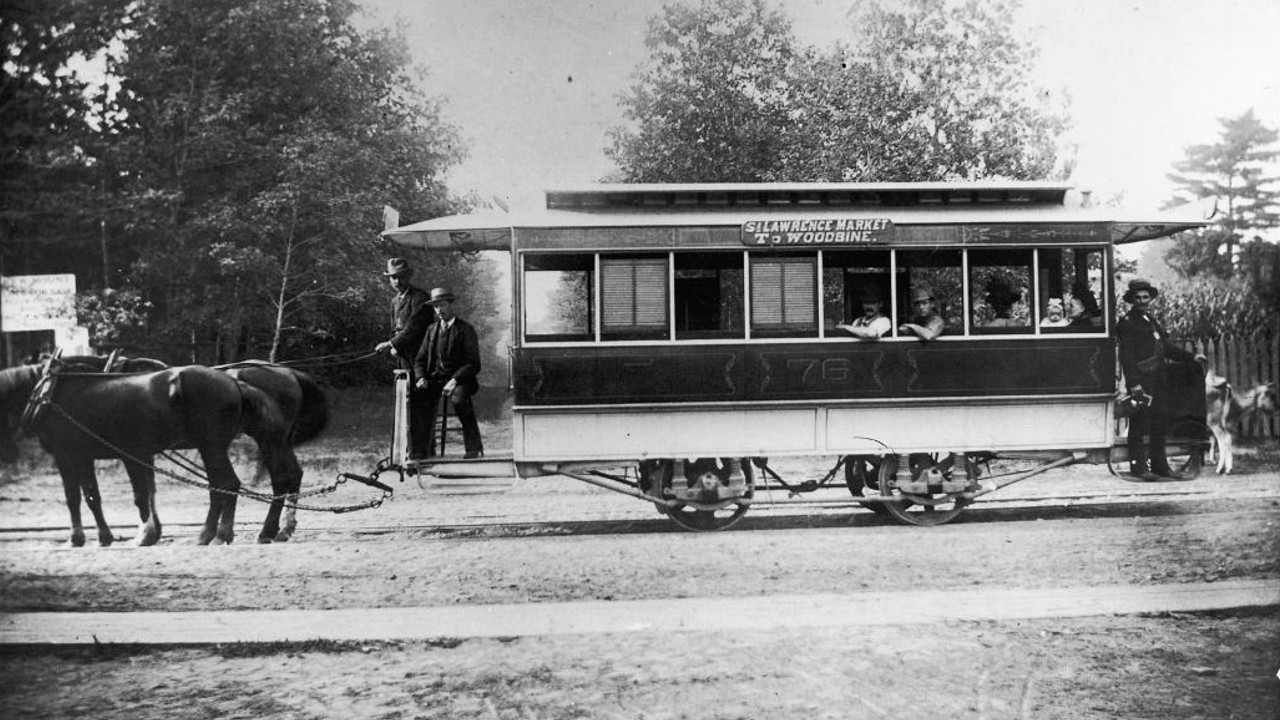Remembering Toronto’s first streetcar line
Streetcars are an iconic part of the Toronto landscape. Where did they get their start?

Toronto’s streetcars are iconic — emblematic of the city’s interconnectivity even for those who don’t take them.
Nowadays, the latest models feature low, accessible floors, multiple sets of doors that open with the push of a button, and tap pads for simple payment. They travel a network of nine lines and 83 km of track.
Of course, it took a while to get to this spot. As that network was built up, Toronto went through several types of vehicles, each with its pros and cons.
And while Toronto streetcars have been electrified for well over a century, the very first version wasn’t. In fact, when it first hit the street on Sept. 10, 1861, it wasn’t powered by any fuel at all.
Here’s a breakdown of the first Toronto streetcars, and where they traveled.
When did streetcars come to Toronto?
Very soon after the city became a city, it turns out.
In July 1861 — when the City of Toronto was roughly 27 years old — city council voted to bring streetcars to town, giving the Toronto Street Railway Company the exclusive contract for a period of 30 years.
TSRC president Alex Eaton had helped create Philadelphia’s first streetcar line three years earlier. And because electricity and the combustion engine were still some years off, the first streetcars would use Eaton’s personally designed horse-drawn cars.
Things came together fast. Crews started laying down track shortly after the council vote, and the line was ready to go by early September.
Where did the line go?
Starting on its northern end, the line moved south along Yonge from Yorkville Town Hall, located at what we now know as Scollard St. — just beyond the modern-day Toronto Reference Library. It then turned east at King St. and made its final stop at St. Lawrence Hall.
A reporter from the Globe covered the first run of the streetcar on Sept. 10, noting that a procession of four cars traversed the route from north to south, and that the first car did so with a band playing “spirited” music on top of it.
The event drew a multitude of on-lookers, and seemed to be a rousing success despite a few hitches that started around Bloor St.:
The first car, with the band, had only proceeded as far as the line which divides Toronto from Yorkville, when it ran off the track and came to a sudden stop. The passengers inside alighted and assisted in placing the vehicle on the rails again, and the driver received the order “go-ahead.” This occurred several times with all the cars on the journey, but the passengers treated the delay as a joke, and the crowd were always ready to give a “shove” or “lift” to keep moving.
What happened next?
The cars got better at staying on their tracks, and more lines followed. Eventually, in 1892, the lines were electrified, and a series of new streetcars replaced the original horse-drawn cars.
The system grew to cover nearly the entire City of Toronto, and the number of lines eventually far exceeded the ones still in use today. By the middle of the 20th century, however, changing tastes, times, and technology meant the network halted its growth and began to shrink.
In 1954, the Yonge St. streetcar line was discontinued. In its place, the city’s first subway came to life after years of planning, debating, and, finally, construction.
This is an updated version of an article originally published in 2022.
Code and markup by Bridget Walsh. ©Torontoverse, 2023